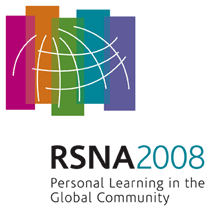
Abstract Archives of the RSNA, 2008
LL-BR2177-H05
CT Angiographic Mapping of the Inferior Epigastric Artery prior to Free Transverse Rectus Abdominus Musculocutaneous Flap Breast Reconstruction
Scientific Posters
Presented on December 2, 2008
Presented as part of LL-BR-H: Breast Imaging
Asim F. Choudhri MD, Presenter: Nothing to Disclose
Patrick Garvey MD, Abstract Co-Author: Nothing to Disclose
Michael A. Cohen MD, Abstract Co-Author: Nothing to Disclose
Kant Lin, Abstract Co-Author: Nothing to Disclose
Klaus D. Hagspiel MD, Abstract Co-Author: Grant, Siemens AG, Malvern, PA
Autologous breast reconstruction with the free transverse rectus abdominus musculocutaneous (FTRAM) flap is a preferred choice for breast reconstruction by many women after mastectomy. The technical complexity of the FTRAM dissection is associated with failure rates of approximately 10% most commonly associated with microvascular obstruction. Technical limitations discourages plastic surgeons from offering this type of sophisticated operation outside of high volume centers. We hypothesized that preoperative CT angiographic (CTA) mapping of the inferior epigastric artery and its branches would allow preoperative dissection planning and may lead to improved flap survival and decreased complications.
CTA of the abdomen and pelvis was performed in a caudo-cranial direction, with bolus timing trigger off of the common femoral artery. Curved-plane coronal MIP imaging and three-dimensional reconstructions were performed of the anterior abdominal wall. Vessel caliber, branching pattern, and location of perforating vessels was reported and reviewed with plastic surgeons prior to operation and used for preoperative determination of optimal dissection margins. 6 CTA guided TRAM free flaps were performed in 4 consecutive patients in a 3 month period.
Intraoperative findings correlated with CTA vascular mapping in 6/6 TRAM free flaps attempted. In these 6 consecutive FTRAM free flaps no graft failure, thrombosis, hemorrhagic complication, or return to the operating room was reported. In this early series, decreased operating room time was reported compared to procedures performed prior to preoperative CTA mapping.
Plastic surgeons at our institution have increased their confidence in FTRAM free flaps, and currently offer CTA/FTRAM as an option to all patients referred for post-mastectomy reconstruction. Preliminary results at our institution have had a 100% success rate. Collaborative review of preoperative CTA can make harvesting of free flaps more accessible and safer to a broader population, and may allow increased technical success for FTRAM free flaps outside of high-volume centers.
By providing surgeons an intraoperative vascular map, CTA of the inferior epigastric artery may improve the reliability and availability of FTRAM flaps outside high volume centers.
Choudhri, A,
Garvey, P,
Cohen, M,
Lin, K,
Hagspiel, K,
CT Angiographic Mapping of the Inferior Epigastric Artery prior to Free Transverse Rectus Abdominus Musculocutaneous Flap Breast Reconstruction. Radiological Society of North America 2008 Scientific Assembly and Annual Meeting, February 18 - February 20, 2008 ,Chicago IL.
http://archive.rsna.org/2008/6019347.html

